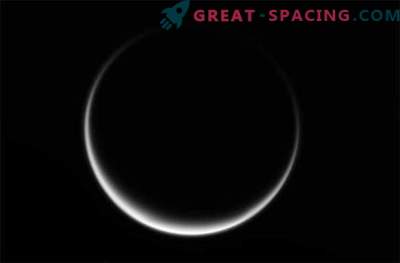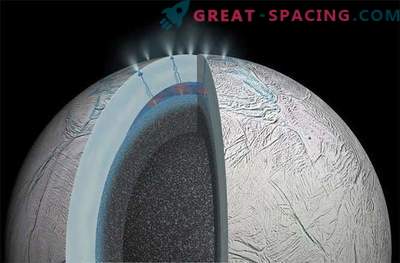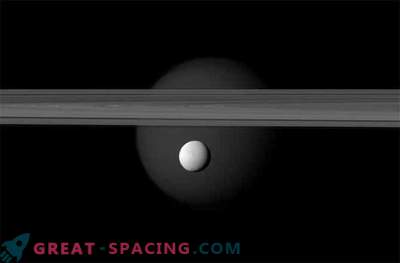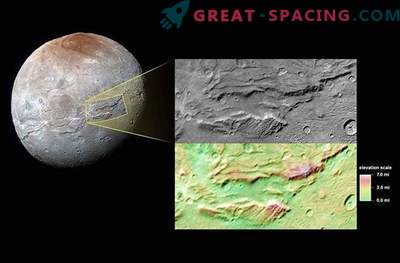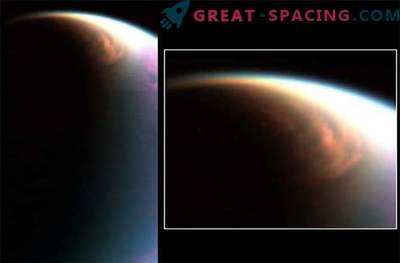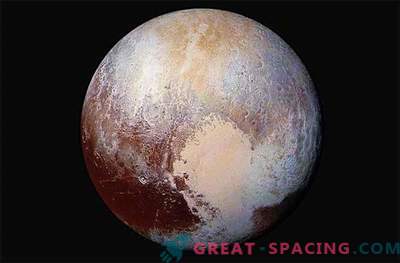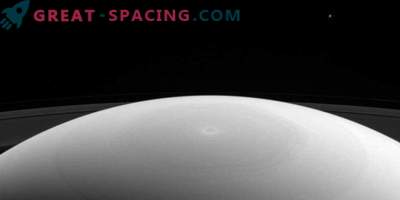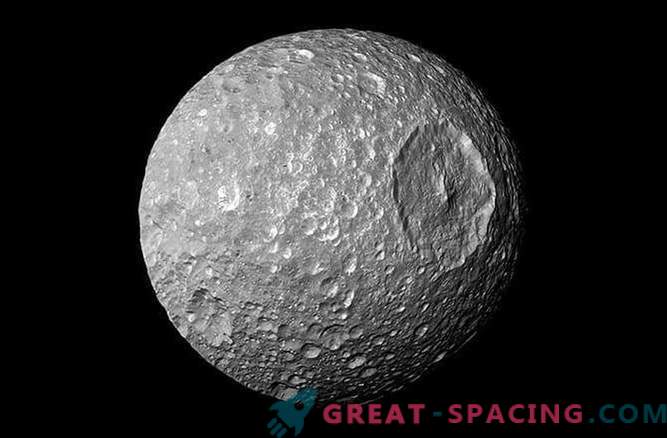
When astronomer Radwan Tajdeddin and his colleagues decided to measure the vibrations of the small satellite of Saturn Mimas, they did not expect to find anything interesting.
With its strong craters and geologically dead surface, Mimas was considered a boring scientific object.
But appearances can be deceiving. Using data from the Cassini spacecraft, a new NASA study shows that something strange is happening inside Mimas. This is something that causes the satellite to sway.
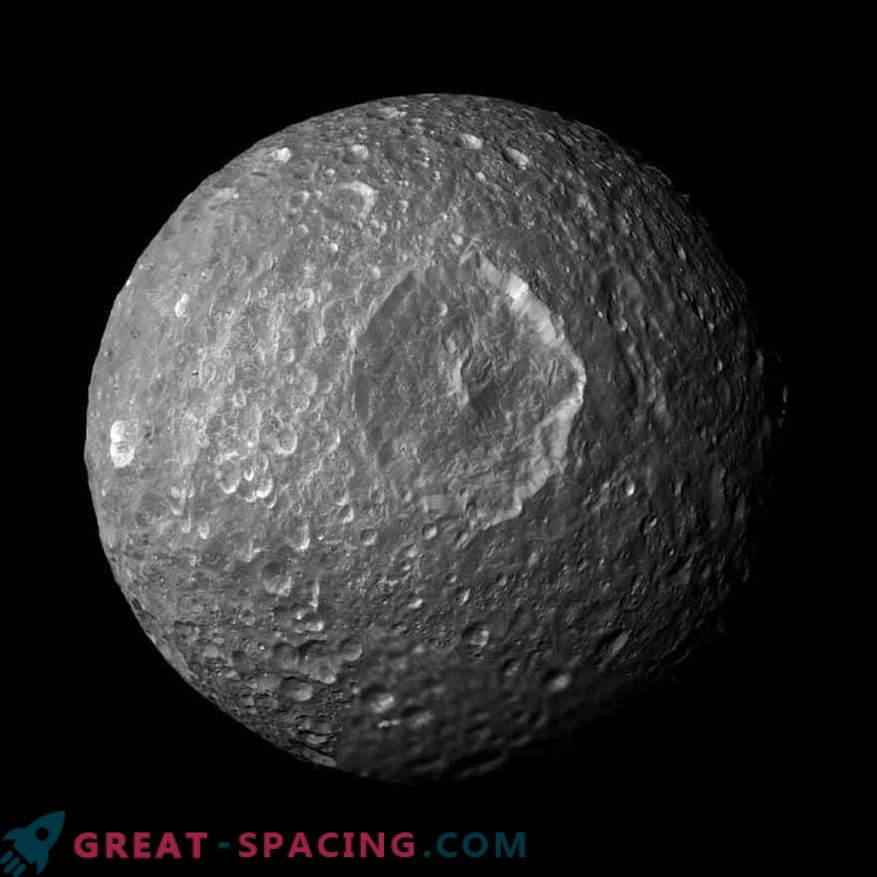
Mimas image formed by Cassini images. In the center - the crater Herschel
Computer models suggest two options. The first option assumes that Mimas, which is about 250 miles in diameter, has an oblong core, hinting that a satellite could have formed inside Saturn’s ice rings. The second is that Mimas has a global ocean located below the surface at a depth of 16 to 19 km.
However, both theories have their flaws. First, on the surface of Mimas no signs of such a strange-shaped nucleus have so far been found. Secondly, the surface of the satellite does not have any signs of heating, although a certain amount of energy is required to melt ice and maintain a liquid ocean.

Thanks to the shadow flaps on the crater feature, Herschel can understand the parameters of the walls and the central peak. The formation was named in honor of William Herschel. It stretches for 139 km (1/3 of the lunar diameter). Large craters are characterized by the presence of peaks in the center. If you compare, the peak Herschel is almost as high as Everest. The survey shows that the north rises and turns 21 degrees to the right. For a snapshot, a narrow-angle camera of the Cassini spacecraft was used (October 22, 2016). The filter absorbed the wavelengths of UV light with a center at 338 nanometers. The observation was made at a distance of 185,000 km from the satellite and at an angle of 20 degrees. Scale: 1 km per pixel. The Cassini program is a general development of ESA, NASA and the Italian Space Agency. The team is located in the Jet Propulsion Laboratory. Two cameras on board are also created by them. The extracted photos are processed in Boulder (Colorado). According to one version, Mimas eccentric orbit is the cause of this phenomenon.
"This phenomenon creates friction inside the satellite, which causes heat and can melt ice and form the ocean," said Tajeddin of Cornell University.
Shortly after Mimas was formed, the heat generated by the natural decay of radioactive materials could lead to the melting of ice. Later, chemical reactions between silicate rocks and waters added water.
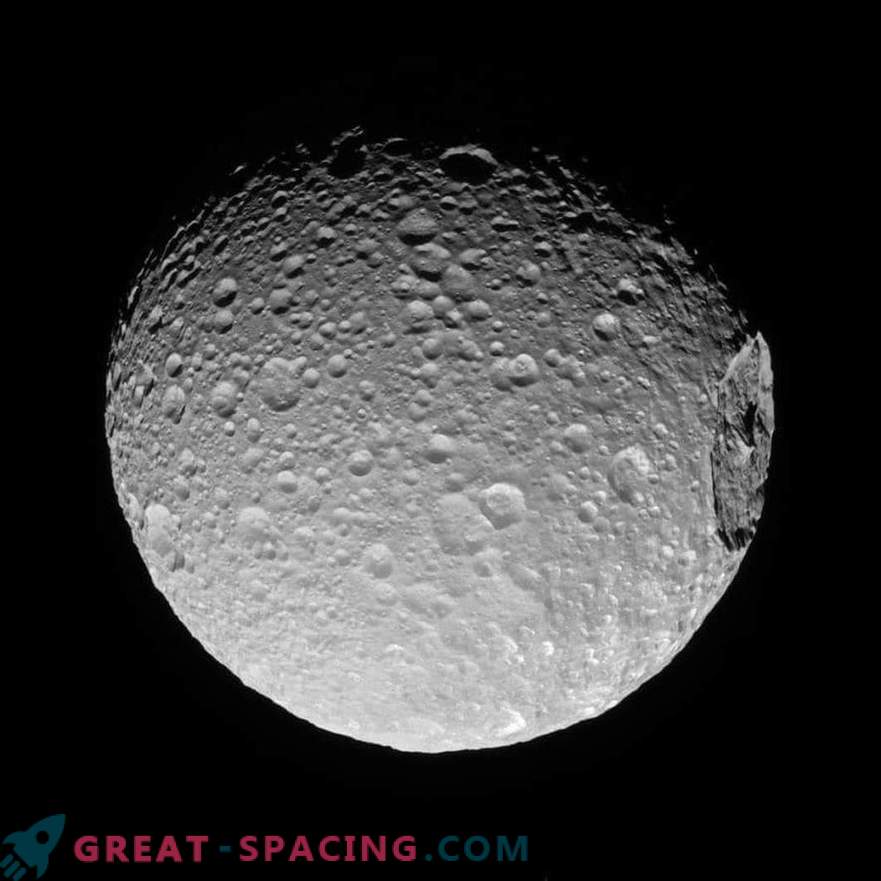
In this review, we can consider the large-scale crater of the moon, Mimas-Herschel. Created a significant blow that can destroy the satellite completely. When a large drummer falls to the surface, a huge energy reserve is created. Sometimes it is enough to lead to global destruction. Even non-catastrophic impacts can lead to gigantic and stable scars (the crater extends over 396 km). In the picture, the north rises and turns 32 degrees to the left. The survey was conducted on November 19, 2016 in visible light and at a distance of 85,000 km. Scale: 511 m per pixel. The Cassini program is a general development of ESA, NASA and the Italian Space Agency. The team is located at the lrd. Two cameras on board are also created by them. The extracted photos are processed in Boulder (Colorado).
“Together, all these energy sources can provide enough heat to form a thin layer of the ocean below the surface of Mimas. After the ocean was formed, the heat that came from the gravitational effect became much larger and probably was able to maintain the ocean in liquid form - Attilio Rivoldini, a planetary scientist with the Royal Observatory of Belgium, said in an e-mail. "The amount of gravitational heating depends on Mimas orbit, which may change over time," added Rivoldini.
Subsequent measurements of Mimas surface temperature can show whether internal heat exists in the satellite. If Mimas does have a liquid ocean, he will join the growing list of planets and satellites of the solar system that could be livable.
